Legal Tools for Blue-Green Infrastructure Planning—Based on the Example of Poznań (Poland)
Abstract
:1. Introduction
Issues of Spatial Planning at the Local Level versus BGI
2. Materials and Methods
- The absence of a full definition of BGI and ecosystem services in the Polish legal system;
- The limited influence of the scientific community on the formation of BGIs;
- The complexity of legal regulations relating to the protection of BGI;
- The use of unreliable eco-physiographic studies in the development of the MPZP;
- The non-obligatory nature of the MPZP for the entire municipality.
- Selecting possible solutions that may function in the current legal status;
- Suggesting new planning methods supporting the development of BGI masterplans;
- Developing guidelines for amending certain legal acts to improve the current legal status.
- Are there legal tools to create BGI elements at the local level in Poland;
- How can BGI be planned in Poland without acts of law directly regulating such activities;
- How can the planning process be improved to consider the protection and creation of BGIs in Polish cities?
3. Results
3.1. Land Use Classes
3.2. Protection and Development Principles
- To protect and shape the spatial order and landscape, it is necessary to develop the BGI to decide, for instance: (1) the specific location of functional green zones, including greenery accompanying buildings; (2) the minimum biologically active area of car parks, along with the height of trees and shrubs to be planted on their premises; (3) a ban on large-scale development or other infrastructure that impacts the landscape; (4) prohibition of obscuring fences; (5) maximum crossings of the building line for facades covered with greenery—located above the ground floor; (6) the need to develop communication routes with high greenery in case of the location of commercial facilities above a specific area; (7) a ban on the location of building elements—including buildings—in specific green zones; (8) the possibility of locating small architecture objects in a given function; and (9) the possibility of locating outdoor sports and recreation equipment, sports fields, playgrounds, and games;
- In the context of environmental, nature, and cultural landscape protection, it may be essential for the development of BGI to: (1) preserve and protect existing valuable greenery, including trees; (2) order to locate insulating greenery; (3) preserve and supplement existing trees and shrubs; (4) indicate a possibility of replanting trees or compensating for felled trees; (5) order to develop greenery of all unpaved spaces; (6) protect the landscape values in green areas through maintenance of existing use, including protection of surface waters and natural plant communities; (7) permit new tree plantings in the road lane—provided there is no conflict with road parameters and technical infrastructure; (8) allow plantings on railway areas, ensuring railway traffic safety; (9) preserve open watercourses, ditches, and reservoirs; (10) allow the placement of facilities and devices for retention or management of rainwater and meltwater, including infiltration ditches, drains, retention reservoirs, rain gardens, hydrophyte ponds, absorbent wells, and green roofs and walls; (11) permit the use of permeable and semi-permeable surfaces for hardening accesses, pedestrian and bicycle routes; as well as (12) indicate the maximum height of trees to expose an architectural object;
- In the context of specific land development conditions and restrictions on their use, the BGI development may need to determine, for example: (1) the need to take into account the requirements and restrictions resulting from the vicinity of the forest in the development of the site; (2) taking into account the development restrictions resulting from the location in the area of particular flood risk—following separate provisions regarding flood risk; (3) a ban on the location of buildings in floodplains; (4) a ban on changing the terrain into green areas affecting flood water flow; (5) the need to take into account the requirements and limitations resulting from the course of the technical infrastructure network when planting new trees; (6) the need to take into account the specific development conditions and restrictions resulting from the location near the railway area; and (7) maintaining the continuity of the existing drainage system to allow its reconstruction;
- BGI development may need to consider developing unpaved road strip surfaces with arranged greenery, such as trees, shrubs, lawns, and flowerbeds, to shape public spaces;
- Finally, in the context of protecting cultural heritage, monuments, and contemporary cultural goods, BGI development may need to determine the necessity of, for example: (1) preserving trees protected by the plan—with the possibility of supplementing trees and preserving other trees—which are part of the protected area’s composition; (2) preserving the body, composition, and articulation of the façade, characteristic façade divisions, architectural details, shape, angle of inclination, and type of roofing in the registered building; (3) preserving the park under conservation protection, including restoration of historical development; (4) preserving the terrain associated with the registered buildings; and (5) preserving the original, historical paving surface.
3.3. Parameters and Indicators of Buildings and Land Development
4. Discussion
New Polish Urban Index
5. Conclusions
Future Research Directions
Author Contributions
Funding
Institutional Review Board Statement
Informed Consent Statement
Data Availability Statement
Conflicts of Interest
Abbreviations
| BGI | Blue-Green Infrastructure |
| UHI | Urban Heat Island |
| MPZP | Local Spatial Development Plan (Miejscowy Plan Zagospodarowania Przestrzennego) |
| WZ | Development Conditions (Warunki Zabudowy) |
| NBS | Nature-Based Solutions |
| ES | Ecosystem Services |
| SUiKZP | Municipal Spatial Development Plan (Studium Uwarunkowań i Kierunków Zagospodarowania Przestrzeni) |
| NGO | Non-Governmental Organization |
| OPZP | Spatial Planning and Development Act (Ustawa o Planowaniu i Zagospodarowaniu Przestrzennym) |
| UEQI | Urban Ecosystem Quality Index |
| PBC | Biologically Active Surface Index (Wskaźnik Powierzchni Biologicznie Czynnej) |
| BAF | Berlin Biotope Area Factor |
| GF | Malmö Green Space Factor |
| SGF | Seattle Green Factor |
| EPI | Environmental Performance Index |
| ERI | Environmental Resilience Index |
| EQI | Environmental Quality Index |
| UERI | Urban Ecosystem Resilience Index |
| CRI | City Resilience Index |
| CDRI | Climate Disaster Resilience Index |
| GIS | Geographic Information System |
| GPS | Global Positioning System |
| BGS | Blue-Green Spaces |
| OE | Eco-physiographic Study (Opracowanie Ekofizjograficzne) |
References
- Göpfert, C.; Wamsler, C.; Lang, W. A Framework for the Joint Institutionalization of Climate Change Mitigation and Adaptation in City Administrations. Mitig. Adapt. Strateg. Glob. Chang. 2019, 24, 1–21. [Google Scholar] [CrossRef] [PubMed]
- Raymond, C.M.; Frantzeskaki, N.; Kabisch, N.; Berry, P.; Breil, M.; Nita, M.R.; Geneletti, D.; Calfapietra, C. A Framework for Assessing and Implementing the Co-Benefits of Nature-Based Solutions in Urban Areas. Environ. Sci. Policy 2017, 77, 15–24. [Google Scholar] [CrossRef]
- Shen, J.; Peng, Z.; Wang, Y. From GI, UGI to UAGI: Ecosystem Service Types and Indicators of Green Infrastructure in Response to Ecological Risks and Human Needs in Global Metropolitan Areas. Cities 2023, 134, 104176. [Google Scholar] [CrossRef]
- Reid, W.V.; Mooney, H.A.; Cropper, A.; Capistrano, D.; Carpenter, S.R.; Chopra, K.; Dasgupta, P.; Dietz, T.; Duraiappah, A.K.; Hassan, R. Ecosystems and Human Well-Being-Synthesis: A Report of the Millennium Ecosystem Assessment; Island Press: Washington, DC, USA, 2005; ISBN 1-59726-040-1. [Google Scholar]
- Ghofrani, Z.; Sposito, V.; Faggian, R. A Comprehensive Review of Blue-Green Infrastructure Concepts. Int. J. Environ. Sustain. 2017, 6, 15–36. [Google Scholar] [CrossRef]
- Kumar, P. The Economics of Ecosystems and Biodiversity: Ecological and Economic Foundations; Routledge: London, UK, 2012; ISBN 1-136-53879-8. [Google Scholar]
- Maltby, E.; Acreman, M.C. Ecosystem Services of Wetlands: Pathfinder for a New Paradigm. Hydrol. Sci. J. 2011, 56, 1341–1359. [Google Scholar] [CrossRef]
- Hasan, S.S.; Zhen, L.; Miah, M.G.; Ahamed, T.; Samie, A. Impact of Land Use Change on Ecosystem Services: A Review. Environ. Dev. 2020, 34, 100527. [Google Scholar] [CrossRef]
- Guerry, A.D.; Polasky, S.; Lubchenco, J.; Chaplin-Kramer, R.; Daily, G.C.; Griffin, R.; Ruckelshaus, M.; Bateman, I.J.; Duraiappah, A.; Elmqvist, T.; et al. Natural Capital and Ecosystem Services Informing Decisions: From Promise to Practice. Proc. Natl. Acad. Sci. USA 2015, 112, 7348–7355. [Google Scholar] [CrossRef] [PubMed]
- Marando, F.; Salvatori, E.; Sebastiani, A.; Fusaro, L.; Manes, F. Regulating Ecosystem Services and Green Infrastructure: Assessment of Urban Heat Island Effect Mitigation in the Municipality of Rome, Italy. Ecol. Model. 2019, 392, 92–102. [Google Scholar] [CrossRef]
- Act 25 Resolution of the Council of Ministers of November 6, 2015 on the Approval of the “Programme for the Conservation and Sustainable Use of Biological Diversity along with the Action Plan for 2015–2020” (Uchwała Rady Ministrów z 6.11.2015 w Sprawie Zatwierdzenia “Programu Ochrony i Zrównoważonego Użytkowania Różnorodności Biologicznej Wraz z Planem Działań Na Lata 2015–2020”). Available online: https://isap.sejm.gov.pl/isap.nsf/DocDetails.xsp?id=WMP20150001207 (accessed on 27 March 2023).
- Redakcja Czasopisma RRPR. Usługi ekosystemowe w zarządzaniu układami przyrodniczymi. Rozw. Reg. Polityka Reg. 2023, 168–169. [Google Scholar] [CrossRef]
- Act 6 Act of March 27, 2003 on Spatial Planning and Development (Ustawa z 27.03.2003 o Planowaniu i Zagospodarowaniu Przestrzennym). Available online: https://isap.sejm.gov.pl/isap.nsf/DocDetails.xsp?id=wdu20030800717 (accessed on 27 March 2023).
- Act 27 Regulation of the Minister of Economic Development and Technology of December 17, 2021 on the Scope of the Project Study of Conditions and Directions of Spatial Development of the Commune (Rozporządzenie Ministra Rozwoju i Technologii z 17.12.2021 w Sprawie Zakresu Projektu Studium Uwarunkowań i Kierunków Zagospodarowania Przestrzennego Gminy). Available online: https://isap.sejm.gov.pl/isap.nsf/DocDetails.xsp?id=WDU20210002405 (accessed on 27 March 2023).
- Sabura, K.; Oleszek, J.; Szkaradkiewicz, M.; Kazak, J. Udział społeczeństwa w ochronie zieleni na obszarach innych niż leśne (Citizen Participation in Greenery’s Preservation in the Areas Other than Forest). Infrastrukt. Ekol. Teren. Wiej. 2014, 657–665. [Google Scholar] [CrossRef]
- Świdyński, J.; Świdyńska, N.K. Konsultacje Społeczne jako Narzędzie Współpracy Obywateli z Samorządem Gminnym na Przykładzie Olsztyna (Public Consultation as a Tool of Cooperation of Citizens with Local Municipality on Example of Olsztyn); Wydawnictwo Uniwersytetu Ekonomicznego we Wrocławiu: Wroclaw, Poland, 2016. [Google Scholar]
- Act 7 Act of April 27, 2001—Environmental Protection Law (Ustawa z 27.04.2001—Prawo Ochrony Środowiska). Available online: https://isap.sejm.gov.pl/isap.nsf/DocDetails.xsp?id=wdu20010620627 (accessed on 27 March 2023).
- Act 26 Regulation of the Minister of the Environment of September 9, 2002 on Eco-physiographic Studies (Rozporządzenie Ministra Środowiska z 9.09.2002 w Sprawie Opracowań Ekofizjograficznych). Available online: https://isap.sejm.gov.pl/isap.nsf/DocDetails.xsp?id=WDU20021551298 (accessed on 27 March 2023).
- Korwel-Lejkowska, B.; Szlachetko, J. Opracowanie ekofizjograficzne w planowaniu przestrzennym jako przesłanka zrównoważonego rozwoju (An ecophysiographic study in area planning and development as the basis of balanced development). Prawo 2015, 318, 95–103. [Google Scholar]
- Tamburini, G.; Bommarco, R.; Wanger, T.C.; Kremen, C.; van der Heijden, M.G.A.; Liebman, M.; Hallin, S. Agricultural Diversification Promotes Multiple Ecosystem Services without Compromising Yield. Sci. Adv. 2020, 6, eaba1715. [Google Scholar] [CrossRef] [PubMed]
- Act 12 Act of February 3, 1995 on the Protection of Agricultural and Forest Land (Ustawa z 3.02.1995 o Ochronie Gruntów Rolnych i Leśnych). Available online: https://isap.sejm.gov.pl/isap.nsf/DocDetails.xsp?id=wdu19950160078 (accessed on 27 March 2023).
- Khan, I.; Zhao, M. Water Resource Management and Public Preferences for Water Ecosystem Services: A Choice Experiment Approach for Inland River Basin Management. Sci. Total Environ. 2019, 646, 821–831. [Google Scholar] [CrossRef] [PubMed]
- Act 1 Act of July 20, 2017—Water Law (Ustawa z 20.07.2017—Prawo Wodne). Available online: https://isap.sejm.gov.pl/isap.nsf/DocDetails.xsp?id=WDU20170001566 (accessed on 6 June 2023).
- Act 9 Act of March 21, 1991 on Maritime Areas of the Republic of Poland and Maritime Administration (Ustawa z 21.03.1991 o Obszarach Morskich Rzeczypospolitej Polskiej i Administracji Morskiej). Available online: https://isap.sejm.gov.pl/isap.nsf/DocDetails.xsp?id=wdu19910320131 (accessed on 27 March 2023).
- Act 5 Act of September 28, 1991 on Forests (Ustawa z 28.09.1991 o Lasach). Available online: https://isap.sejm.gov.pl/isap.nsf/DocDetails.xsp?id=wdu19911010444 (accessed on 27 March 2023).
- Act 29 Announcement of the Speaker of the Sejm of the Republic of Poland of March 23, 2022 on the Publication of the Consolidated Text of the Act on Nature Protection (Obwieszczenie Marszałka Sejmu Rzeczypospolitej Polskiej z 23.03.2022 w Sprawie Ogłoszenia Jednolitego Tekstu Ustawy o Ochronie Przyrody). Available online: https://isap.sejm.gov.pl/isap.nsf/DocDetails.xsp?id=WDU20220000916 (accessed on 5 May 2023).
- Sowińska-Świerkosz, B.; Michalik-Śnieżek, M.; Bieske-Matejak, A. Can Allotment Gardens (AGs) Be Considered an Example of Nature-Based Solutions (NBS) Based on the Use of Historical Green Infrastructure? Sustainability 2021, 13, 835. [Google Scholar] [CrossRef]
- Act 2 Polish Allotment Federation—Statute of Family Allotment Gardens (Polski Związek Działkowców—Regulamin). Available online: http://pzd.pl/regulamin.html (accessed on 6 June 2023).
- Act 28 Regulation of the Minister of Infrastructure of March 7 2008 on the Requirements to Be Met by Cemeteries, Graves and Other Places of Burial (Rozporządzenie Ministra Infrastruktury z 7.03.2008 w Sprawie Wymagań, Jakie Muszą Spełniać Cmentarze, Groby i Inne Miejsca Pochówku Zwłok i Szczątków). Available online: https://isap.sejm.gov.pl/isap.nsf/DocDetails.xsp?id=WDU20080480284 (accessed on 27 March 2023).
- Act 4 Act of January 31, 1959 on Cemeteries and Burial of the Deceased (Ustawa z 31.01.1959 o Cmentarzach i Chowaniu Zmarłych). Available online: https://isap.sejm.gov.pl/isap.nsf/DocDetails.xsp?id=WDU19590110062 (accessed on 27 March 2023).
- Bartosik, A.; Chomicki, J.; Jankowski, T. Zmiana jakości wody powierzchniowej podczas infiltracji na przykładzie ujęcia “Dębina” w Poznaniu (Variations in surface water quality during infiltration: A case study). Ochr. Śr. 2007, 29, 51–54. [Google Scholar]
- Act 13 Resolution of the Poznań City Council No. LXXIII/1341/VIII/2022 of November 8, 2022 (Uchwała Nr LXXIII/1341/VIII/2022 z 8.11.2022). Available online: https://bip.poznan.pl/bip/uchwaly/lxxiii-1341-viii-2022-z-dnia-2022-11-08,89060/ (accessed on 27 March 2023).
- Act 14 Resolution of the Poznań City Council No. LXXIII/1340/VIII/2022 of November 8, 2022 (Uchwała Nr LXXIII/1340/VIII/2022 z 8.11.2022). Available online: https://bip.poznan.pl/bip/uchwaly/lxxiii-1340-viii-2022-z-dnia-2022-11-08,89059/ (accessed on 27 March 2023).
- Act 15 Resolution of the Poznań City Council No. LXXIII/1339/VIII/2022 of November 8, 2022 (Uchwała Nr LXXIII/1339/VIII/2022 z 8.11.2022). Available online: https://bip.poznan.pl/bip/uchwaly/lxxiii-1339-viii-2022-z-dnia-2022-11-08,89058/ (accessed on 27 March 2023).
- Act 16 Resolution of the Poznań City Council No. LXIX/1243/VIII/2022 of July 12, 2022 (Uchwała Nr LXIX/1243/VIII/2022 z 12.07.2022). Available online: https://bip.poznan.pl/bip/uchwaly/lxix-1243-viii-2022-z-dnia-2022-07-12,88098/ (accessed on 27 March 2023).
- Act 17 Resolution of the Poznań City Council No. LXIX/1242/VIII/2022 of July 12, 2022 (Uchwała Nr LXIX/1242/VIII/2022 z 12.07.2022). Available online: https://bip.poznan.pl/bip/uchwaly/lxix-1242-viii-2022-z-dnia-2022-07-12,88097/ (accessed on 27 March 2023).
- Act 18 Resolution of the Poznań City Council No. LXIV/1181/VIII/2022 of May 17, 2022 (Uchwała Nr LXIV/1181/VIII/2022 z 17.05.2022). Available online: https://bip.poznan.pl/bip/uchwaly/lxiv-1181-viii-2022-z-dnia-2022-05-17,87558/ (accessed on 27 March 2023).
- Act 19 Resolution of the Poznań City Council No. LXIV/1180/VIII/2022 of May 17, 2022 (Uchwała Nr LXIV/1180/VIII/2022 z 17.05.2022). Available online: https://bip.poznan.pl/bip/uchwaly/lxiv-1180-viii-2022-z-dnia-2022-05-17,87557/ (accessed on 27 March 2023).
- Act 20 Resolution of the Poznań City Council No. LXIII/1166/VIII/2022 of April 26, 2022 (Uchwała Nr LXIII/1166/VIII/2022 z 26.04.2022). Available online: https://bip.poznan.pl/bip/uchwaly/lxiii-1166-viii-2022-z-dnia-2022-04-26,87358/ (accessed on 27 March 2023).
- Act 21 Resolution of the Poznań City Council No. LX/1121/VIII/2022 of March 8, 2022 (Uchwała Nr LX/1121/VIII/2022 z 8.03.2022). Available online: https://bip.poznan.pl/bip/uchwaly/lx-1121-viii-2022-z-dnia-2022-03-08,86918/ (accessed on 27 March 2023).
- Act 22 Resolution of the Poznań City Council No. LX/1120/VIII/2022 of March 8, 2022 (Uchwała Nr LX/1120/VIII/2022 z 8.03.2022). Available online: https://bip.poznan.pl/bip/uchwaly/lx-1120-viii-2022-z-dnia-2022-03-08,86917/ (accessed on 27 March 2023).
- Act 23 Resolution of the Poznań City Council No. LIX/1094/VIII/2022 of February 15, 2022 (Uchwała Nr LIX/1094/VIII/2022 z 15.02.15). Available online: https://bip.poznan.pl/bip/uchwaly/lix-1094-viii-2022-z-dnia-2022-02-15,86678/ (accessed on 27 March 2023).
- Act 24 Resolution of the Poznań City Council No. LIX/1093/VIII/2022 of February 15, 2022 (Uchwała Nr LIX/1093/VIII/2022 z 15.02.2022). Available online: https://bip.poznan.pl/bip/uchwaly/lix-1093-viii-2022-z-dnia-2022-02-15,86677/ (accessed on 27 March 2023).
- Act 8 Act of July 23, 2003 on the Protection and Care of Monuments (Ustawa z 23.07.2003 o Ochronie Zabytków i Opiece Nad Zabytkami). Available online: https://isap.sejm.gov.pl/isap.nsf/DocDetails.xsp?id=wdu20031621568 (accessed on 27 March 2023).
- Act 10 Act of April 16, 2004 on Nature Protection (Ustawa z 16.04.2004 o Ochronie Przyrody). Available online: https://isap.sejm.gov.pl/isap.nsf/DocDetails.xsp?id=wdu20040920880 (accessed on 27 March 2023).
- Act 3 Announcement of the Minister of Economic Development and Technology of April 15, 2022 on the Technical Conditions to Be Met by Buildings and Their Location (Obwieszczenie Ministra Rozwoju i Technologii z 15.04.2022 w Sprawie Warunków Technicznych, Jakim Powinny Odpowiadać Budynki i Ich Usytuowanie). Available online: https://isap.sejm.gov.pl/isap.nsf/DocDetails.xsp?id=WDU20220001225 (accessed on 6 June 2023).
- Cole, R.J. Regenerative Design and Development: Current Theory and Practice. Build. Res. Inf. 2012, 40, 1–6. [Google Scholar] [CrossRef]
- Mang, P.; Haggard, B. Regenerative Development and Design: A Framework for Evolving Sustainability; John Wiley & Sons: Hoboken, NJ, USA, 2016; ISBN 978-1-118-97286-1. [Google Scholar]
- Piwowarczyk, J.; Kronenberg, J.; Dereniowska, M.A. Marine Ecosystem Services in Urban Areas: Do the Strategic Documents of Polish Coastal Municipalities Reflect Their Importance? Landsc. Urban Plan. 2013, 109, 85–93. [Google Scholar] [CrossRef]
- Costanza, R.; d’Arge, R.; de Groot, R.; Farber, S.; Grasso, M.; Hannon, B.; Limburg, K.; Naeem, S.; O’Neill, R.V.; Paruelo, J.; et al. The Value of the World’s Ecosystem Services and Natural Capital. Ecol. Econ. 1998, 25, 3–15. [Google Scholar] [CrossRef]
- de Groot, R.S.; Alkemade, R.; Braat, L.; Hein, L.; Willemen, L. Challenges in Integrating the Concept of Ecosystem Services and Values in Landscape Planning, Management and Decision Making. Ecol. Complex. 2010, 7, 260–272. [Google Scholar] [CrossRef]
- Maczka, K.; Matczak, P.; Pietrzyk-Kaszyńska, A.; Rechciński, M.; Olszańska, A.; Cent, J.; Grodzińska-Jurczak, M. Application of the Ecosystem Services Concept in Environmental Policy—A Systematic Empirical Analysis of National Level Policy Documents in Poland. Ecol. Econ. 2016, 128, 169–176. [Google Scholar] [CrossRef]
- EUR-Lex EUR-Lex—Ecosystem_services—EN—EUR-Lex. Available online: https://eur-lex.europa.eu/EN/legal-content/glossary/ecosystem-services.html (accessed on 28 November 2023).
- Davies, C.; Lafortezza, R. Urban Green Infrastructure in Europe: Is Greenspace Planning and Policy Compliant? Land Use Policy 2017, 69, 93–101. [Google Scholar] [CrossRef]
- García Sánchez, F.; Govindarajulu, D. Integrating Blue-Green Infrastructure in Urban Planning for Climate Adaptation: Lessons from Chennai and Kochi, India. Land Use Policy 2023, 124. [Google Scholar] [CrossRef]
- Lambert-Habib, M.L.; Hidalgo, J.; Fedele, C.; Lemonsu, A.; Bernard, C. How Is Climatic Adaptation Taken into Account by Legal Tools? Introduction of Water and Vegetation by French Town Planning Documents. Urban Clim. 2013, 4, 16–34. [Google Scholar] [CrossRef]
- Davies, C.; Macfarlane, R.; Roe, M.H. Green Infrastructure Planning Guide; Final Report and GI Planning Guide; University of Northumbria, North East Community Forests, University of Newcastle, Countryside Agency, English Nature, Forestry Commission, Groundwork Trusts: Newcastle, UK, 2006; pp. 1–45. [Google Scholar]
- Deely, J.; Hynes, S.; Barquín, J.; Burgess, D.; Finney, G.; Silió, A.; Álvarez-Martínez, J.M.; Bailly, D.; Ballé-Béganton, J. Barrier Identification Framework for the Implementation of Blue and Green Infrastructures. Land Use Policy 2020, 99, 105108. [Google Scholar] [CrossRef]
- Haaland, C.; van den Bosch, C.K. Challenges and Strategies for Urban Green-Space Planning in Cities Undergoing Densification: A Review. Urban For. Urban Green. 2015, 14, 760–771. [Google Scholar] [CrossRef]
- Elmqvist, T.; Setälä, H.; Handel, S.; van der Ploeg, S.; Aronson, J.; Blignaut, J.; Gómez-Baggethun, E.; Nowak, D.; Kronenberg, J.; de Groot, R. Benefits of Restoring Ecosystem Services in Urban Areas. Curr. Opin. Environ. Sustain. 2015, 14, 101–108. [Google Scholar] [CrossRef]
- Nowak, M.J.; Kreja, P. Decyzje o warunkach zabudowy i zagospodarowania terenu jako instrument polityki przestrzennej w “polskich metropoliach” (Decisions on building and land use conditions as an instrument of spatial policy in “Polish metropolises”). Świat Nieruchom. 2012, 2, 4–9. [Google Scholar]
- Izdebski, W.; Śleszyński, P.; Malinowski, Z.; Kursa, M. Analiza morfometryczna planów miejscowych w Polsce (The Morphometric Analysis of Local Spatial Development Plans in Poland). Infrastrukt. Ekol. Teren. Wiej. 2018, 331–347. [Google Scholar]
- Jeżak, J.; Wierzchowski, M.W. Wpływ decyzji o warunkach zabudowy na ład przestrzenny polskich miast (The Impact of Decisions on Development Conditions on the Spatial Order of Polish Cities). Świat Nieruchom. 2014, 3, 25–30. [Google Scholar]
- Astiaso Garcia, D. Green Areas Management and Bioengineering Techniques for Improving Urban Ecological Sustainability. Sustain. Cities Soc. 2017, 30, 108–117. [Google Scholar] [CrossRef]
- Massini, P.; Raeburn, S. Masterplanning for Blue-Green Infrastructure. In ICE Manual of Blue-Green Infrastructure; ICE Manuals; ICE Publishing: Miami, FL, USA, 2023; pp. 43–48. ISBN 978-0-7277-6542-0. [Google Scholar]
- Di Marino, M.; Tiitu, M.; Lapintie, K.; Viinikka, A.; Kopperoinen, L. Integrating Green Infrastructure and Ecosystem Services in Land Use Planning. Results from Two Finnish Case Studies. Land Use Policy 2019, 82, 643–656. [Google Scholar] [CrossRef]
- Act 30 Supreme Audit Office: Preserving and Increasing Green Areas in Cities—Registration Number 172/2021/P/21/074/LLU (Najwyższa Izba Kontroli: Zachowanie i Zwiększenie Terenów Zielonych w Miastach—Nr Ewid. 172/2021/P/21/074/LLU). Available online: https://www.nik.gov.pl/aktualnosci/tereny-zielone-w-miastach.html (accessed on 31 March 2023).
- Thekkan, A.F.; George, A.; Prasad, P.R.C.; Joseph, S. Understanding Blue-Green Infrastructure Through Spatial Maps: Contribution of Remote Sensing and GIS Technology. In Blue-Green Infrastructure Across Asian Countries: Improving Urban Resilience and Sustainability; Dhyani, S., Basu, M., Santhanam, H., Dasgupta, R., Eds.; Springer: Singapore, 2022; pp. 123–138. ISBN 9789811671289. [Google Scholar]
- Sörensen, J.; Persson, A.S.; Olsson, J.A. A Data Management Framework for Strategic Urban Planning Using Blue-Green Infrastructure. J. Environ. Manag. 2021, 299, 113658. [Google Scholar] [CrossRef] [PubMed]
- Peroni, F.; Pristeri, G.; Codato, D.; Pappalardo, S.E.; De Marchi, M. Biotope Area Factor: An Ecological Urban Index to Geovisualize Soil Sealing in Padua, Italy. Sustainability 2020, 12, 150. [Google Scholar] [CrossRef]
- Vartholomaios, A.; Kalogirou, N.; Athanassiou, E.; Papadopoulou, M. The Green Space Factor as a Tool for Regulating the Urban Microclimate in Vegetation-Deprived Greek Cities. In Proceedings of the International Conference on “Changing Cities”: Spatial, Morphological, Formal & Socio-Economic Dimensions, Skiathos, Greece, 18–21 June 2013; pp. 18–21. [Google Scholar]
- Dahlan, M.Z.; Faisal, B.; Chaeriyah, S.; Hutriani, I.W.; Amelia, M. A New Urban Greening Scheme Approach: Increasing Quantity and Quality of Urban Green Space. IOP Conf. Ser. Earth Environ. Sci. 2022, 1092, 012010. [Google Scholar] [CrossRef]
- Praene, J.-P.; Malet-Damour, B.; Radanielina, M.H.; Fontaine, L.; Riviere, G. GIS-Based Approach to Identify Climatic Zoning: A Hierarchical Clustering on Principal Component Analysis. Build. Environ. 2019, 164, 106330. [Google Scholar] [CrossRef]
- Abdelouhed, F.; Ahmed, A.; Abdellah, A.; Yassine, B.; Mohammed, I. Using GIS and Remote Sensing for the Mapping of Potential Groundwater Zones in Fractured Environments in the CHAOUIA-Morocco Area. Remote Sens. Appl. Soc. Environ. 2021, 23, 100571. [Google Scholar] [CrossRef]
- Mohsen, A.; Zeidan, B.; Elshemy, M. Water Quality Assessment of Lake Burullus, Egypt, Utilizing Statistical and GIS Modeling as Environmental Hydrology Applications. Environ. Monit. Assess. 2022, 195, 93. [Google Scholar] [CrossRef]
- Choryński, A.; Matczak, P.; Jeran, A.; Witkowski, M. Extreme Weather Events and Small Municipalities’ Resilience in Wielkopolska Province (Poland). Int. J. Disaster Risk Reduct. 2023, 95, 103928. [Google Scholar] [CrossRef]
- Pińskwar, I.; Choryński, A.; Graczyk, D. Risk of Flash Floods in Urban and Rural Municipalities Triggered by Intense Precipitation in Wielkopolska of Poland. Int. J. Disaster Risk Sci. 2023, 14, 440–457. [Google Scholar] [CrossRef]
- Kęsicka, B.; Kozłowski, M.; Stasik, R. Effectiveness of Controlled Tile Drainage in Reducing Outflow and Nitrogen at the Scale of the Drainage System. Water 2023, 15, 1814. [Google Scholar] [CrossRef]
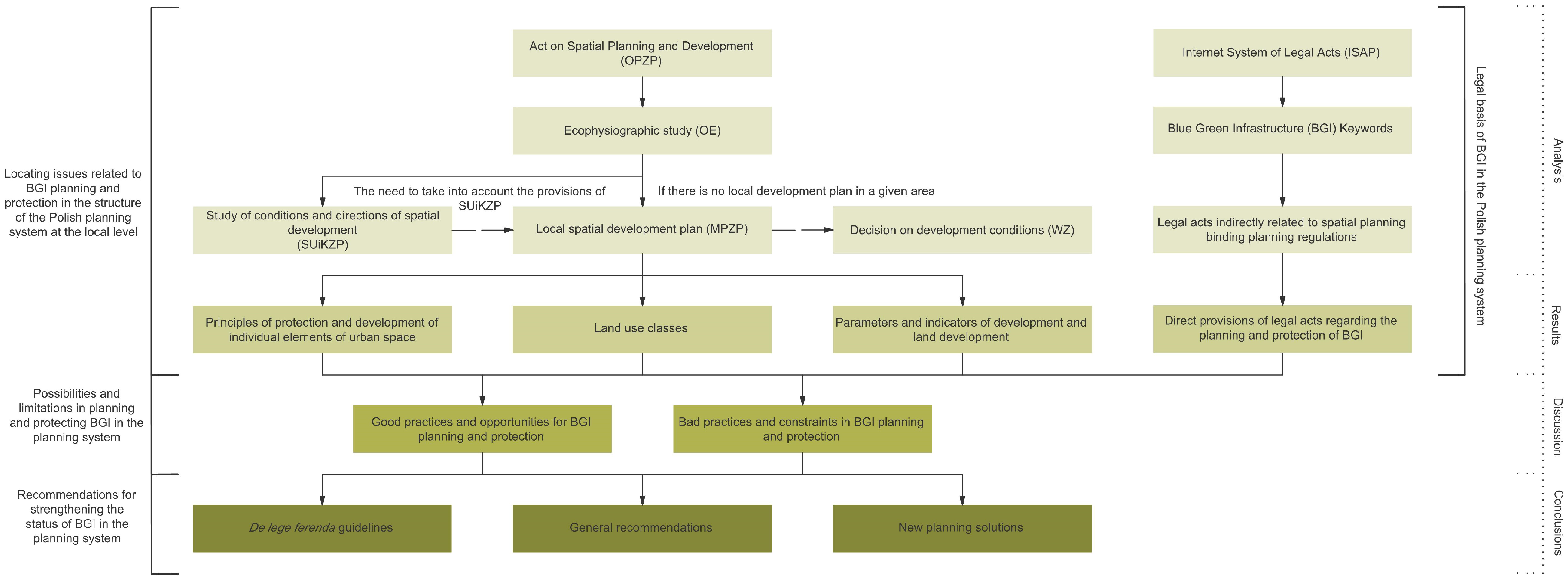
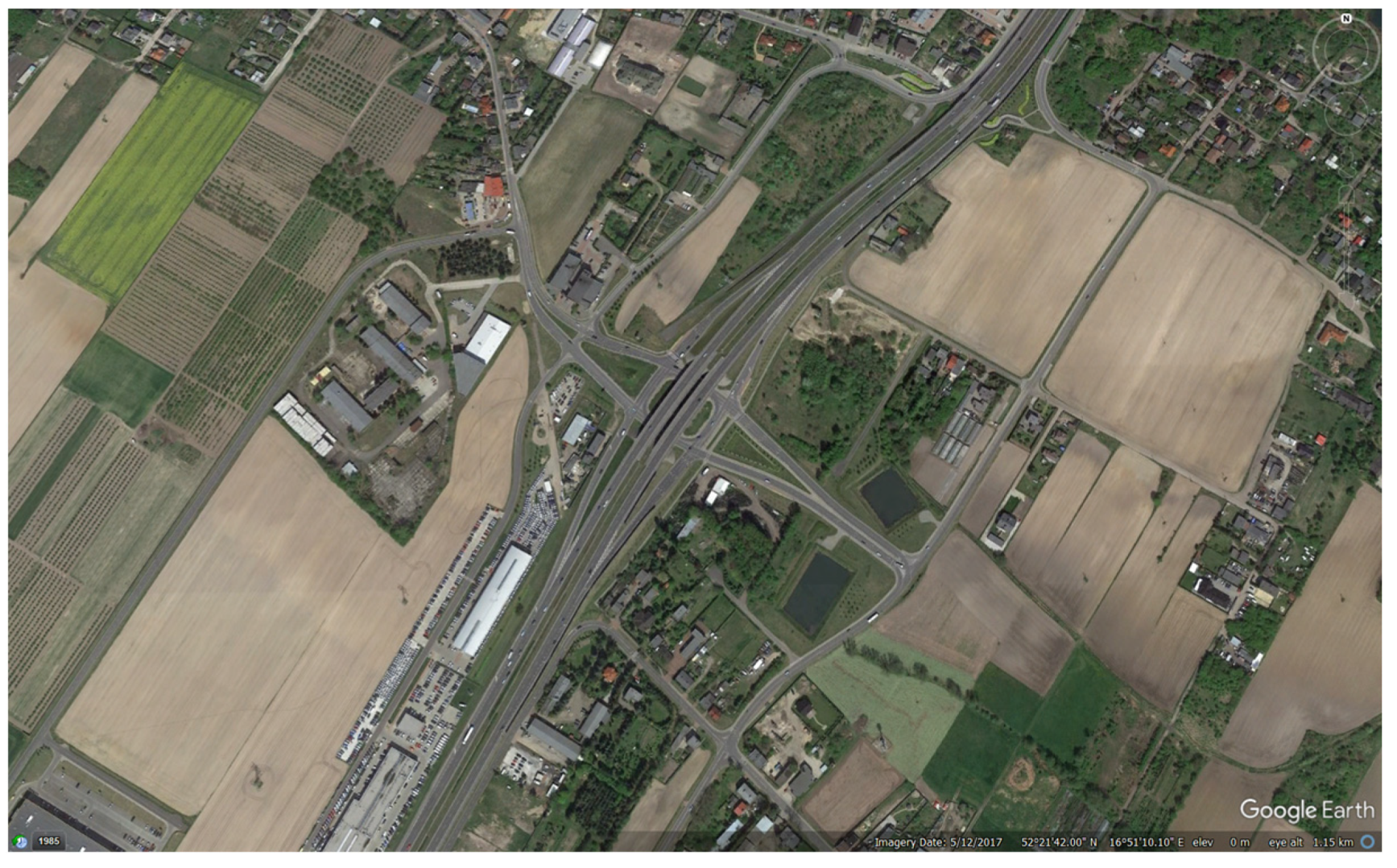
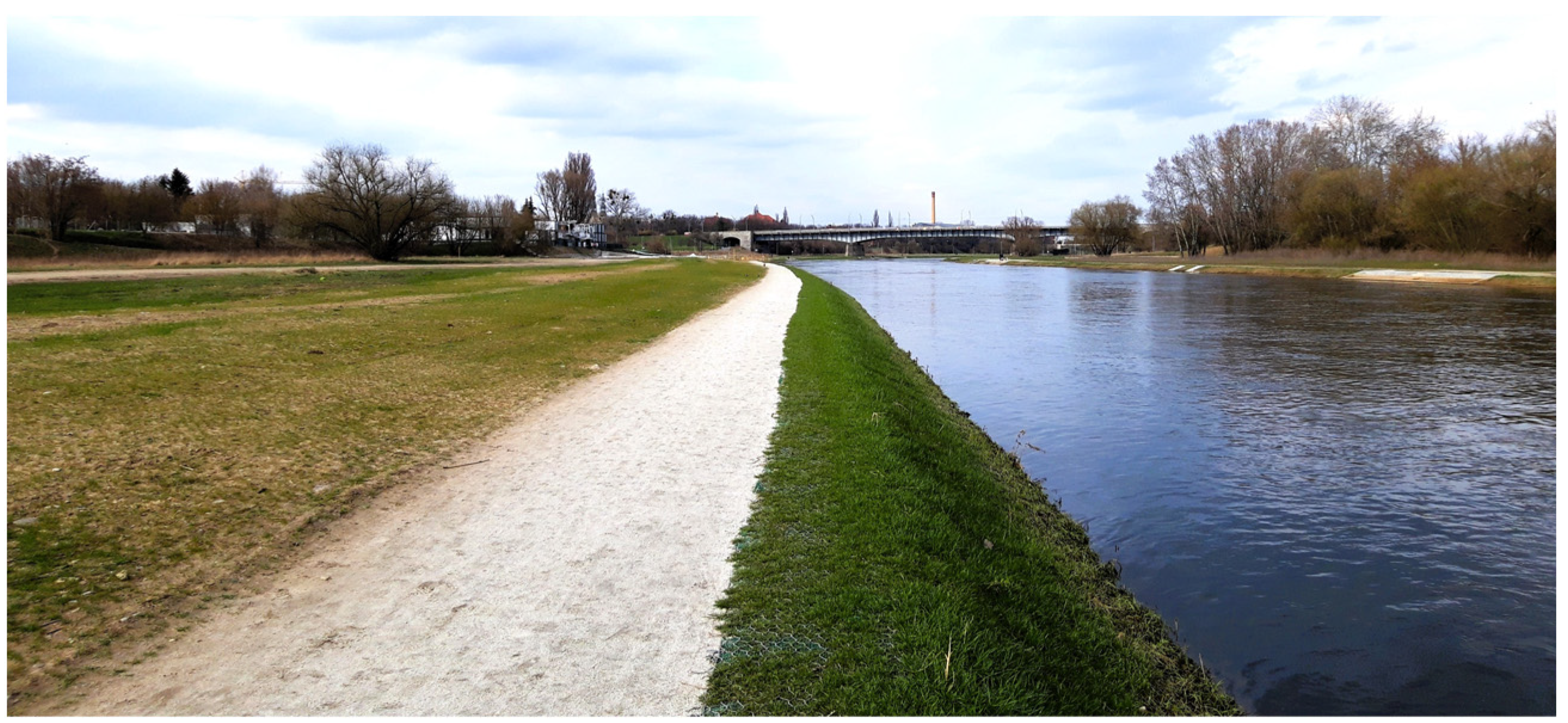
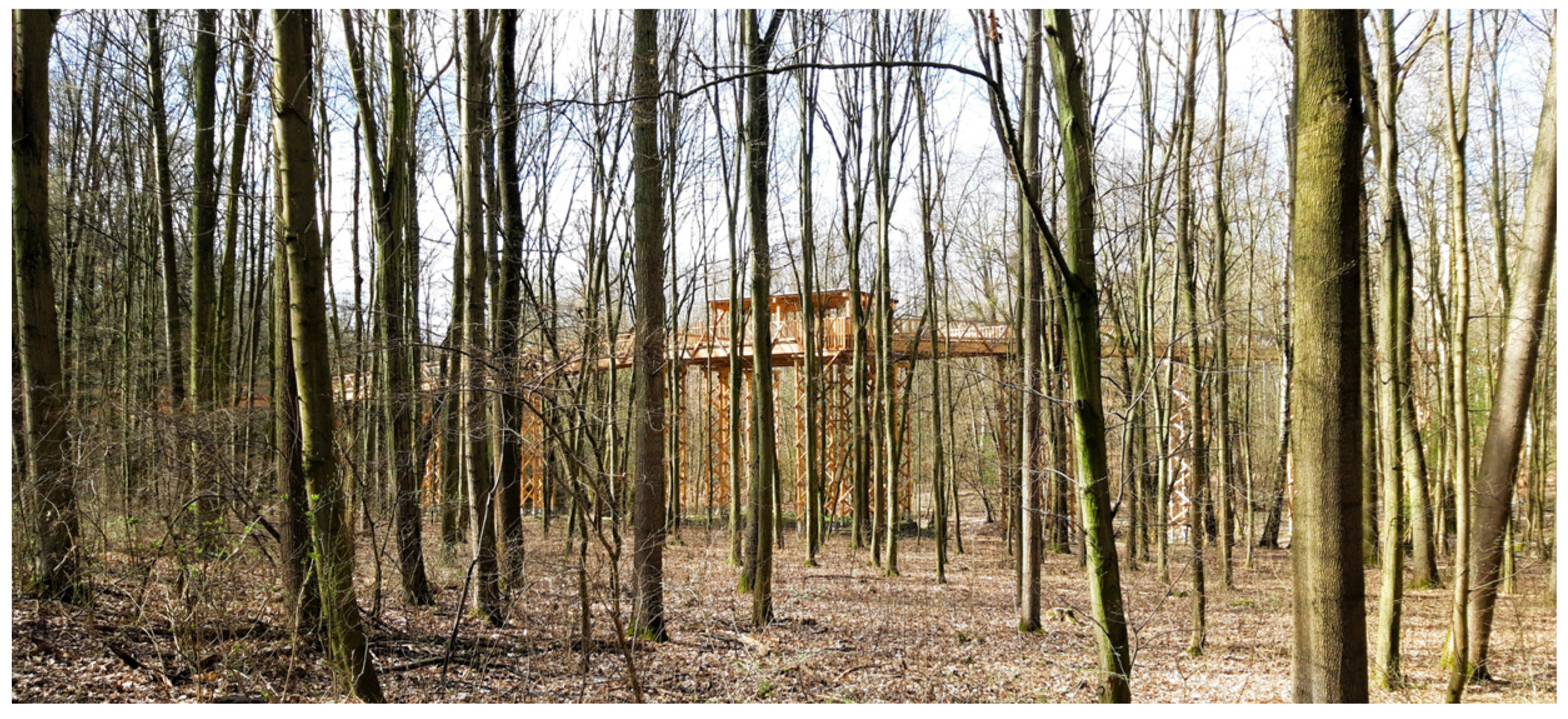
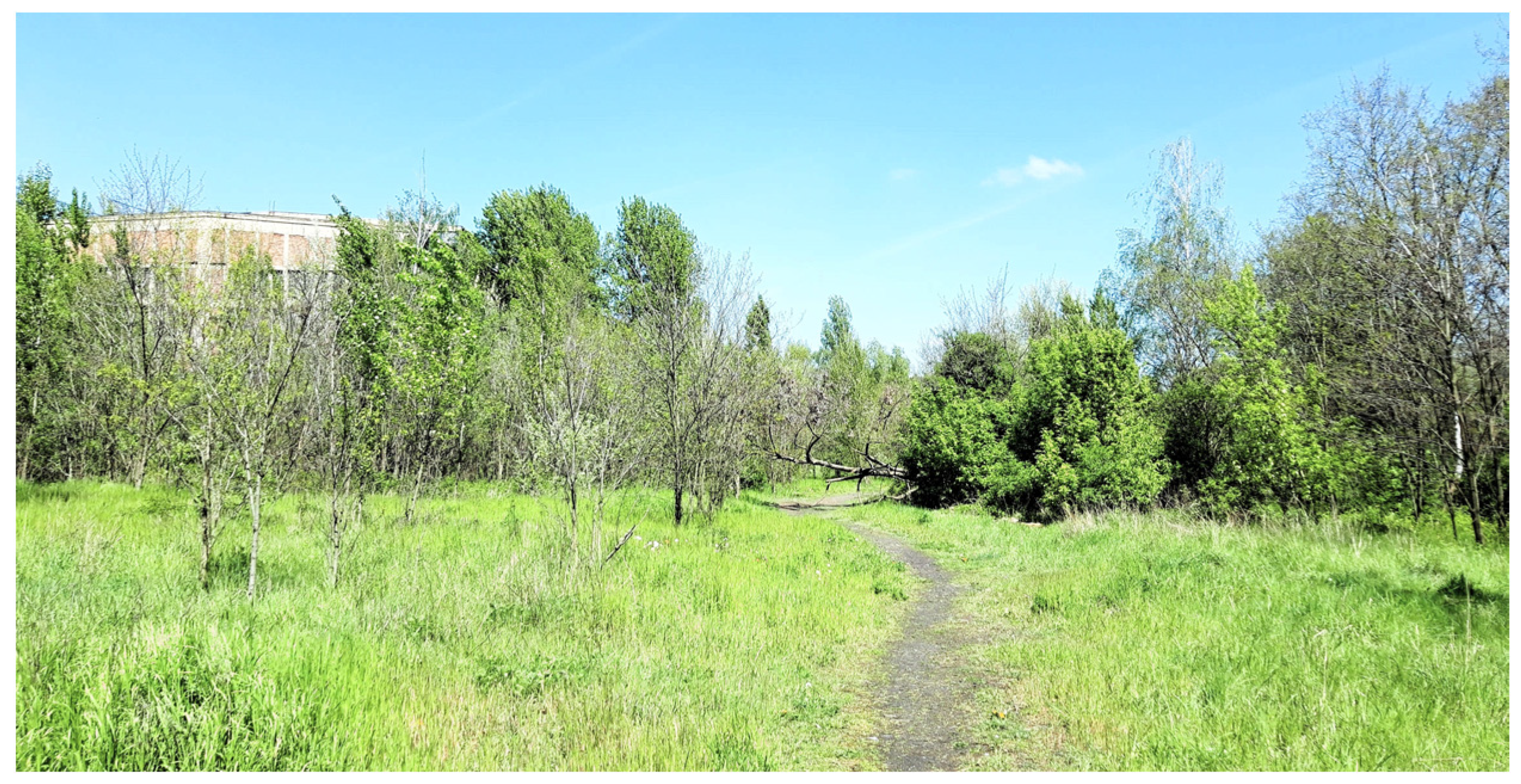
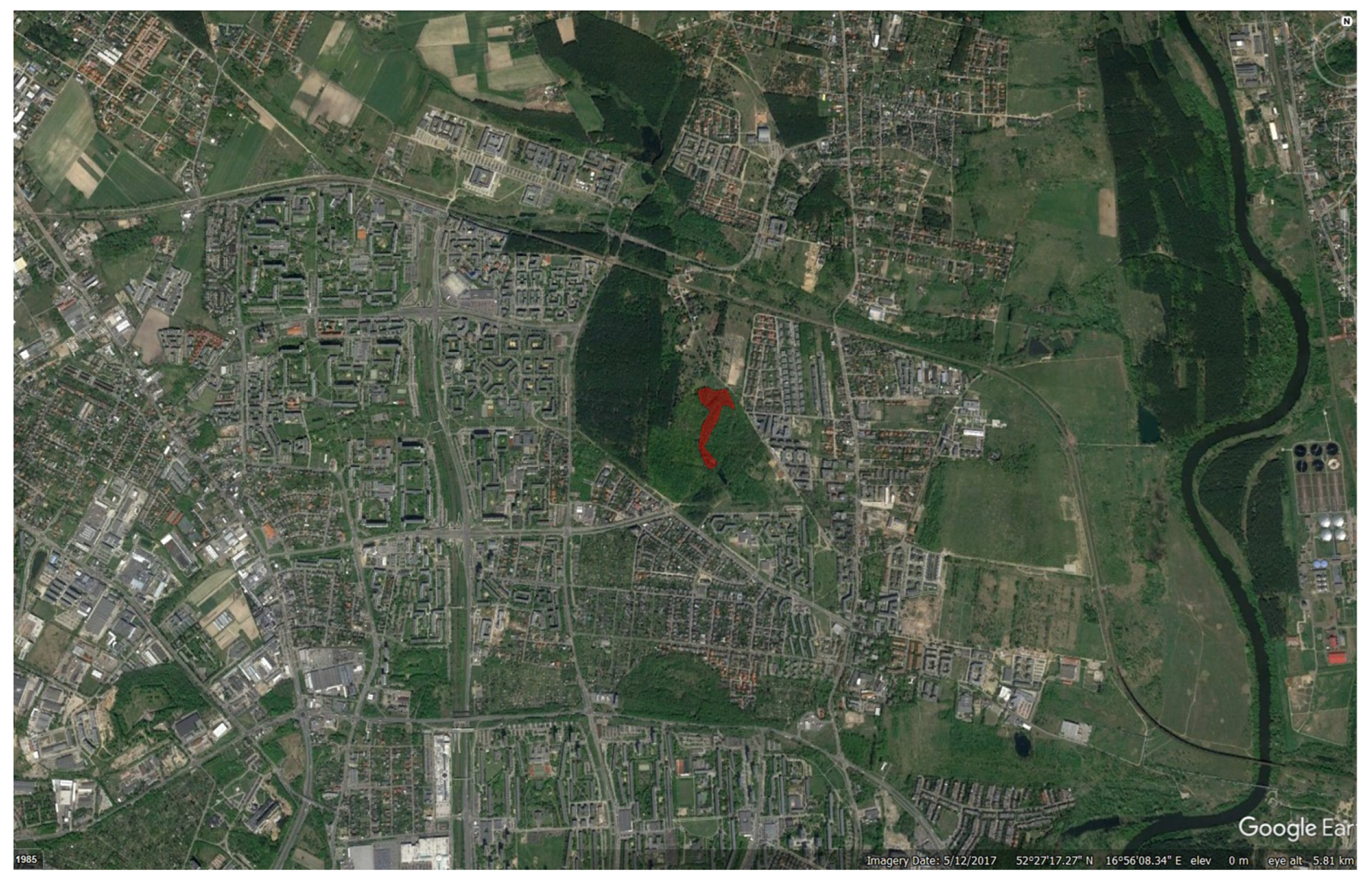
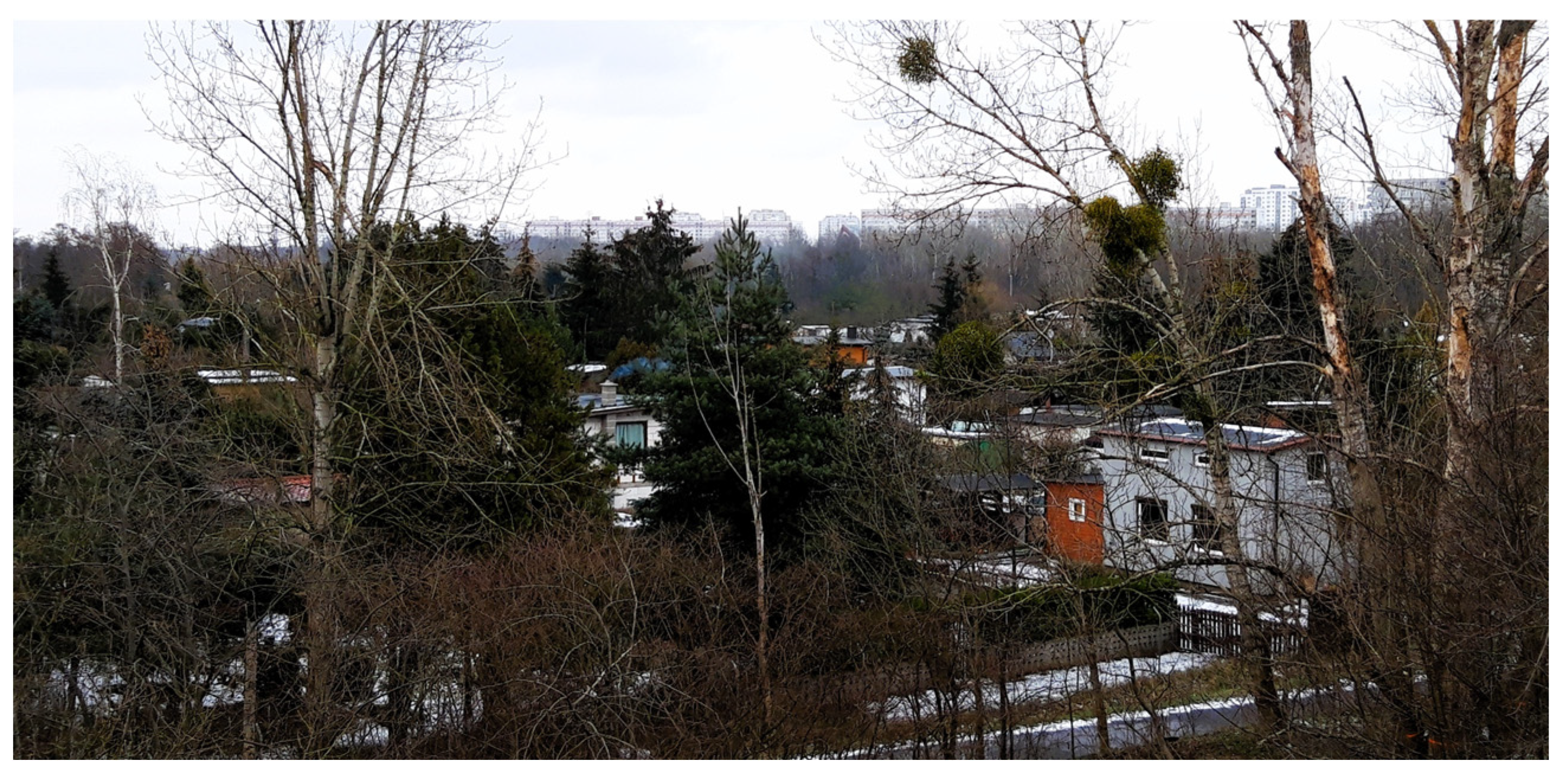
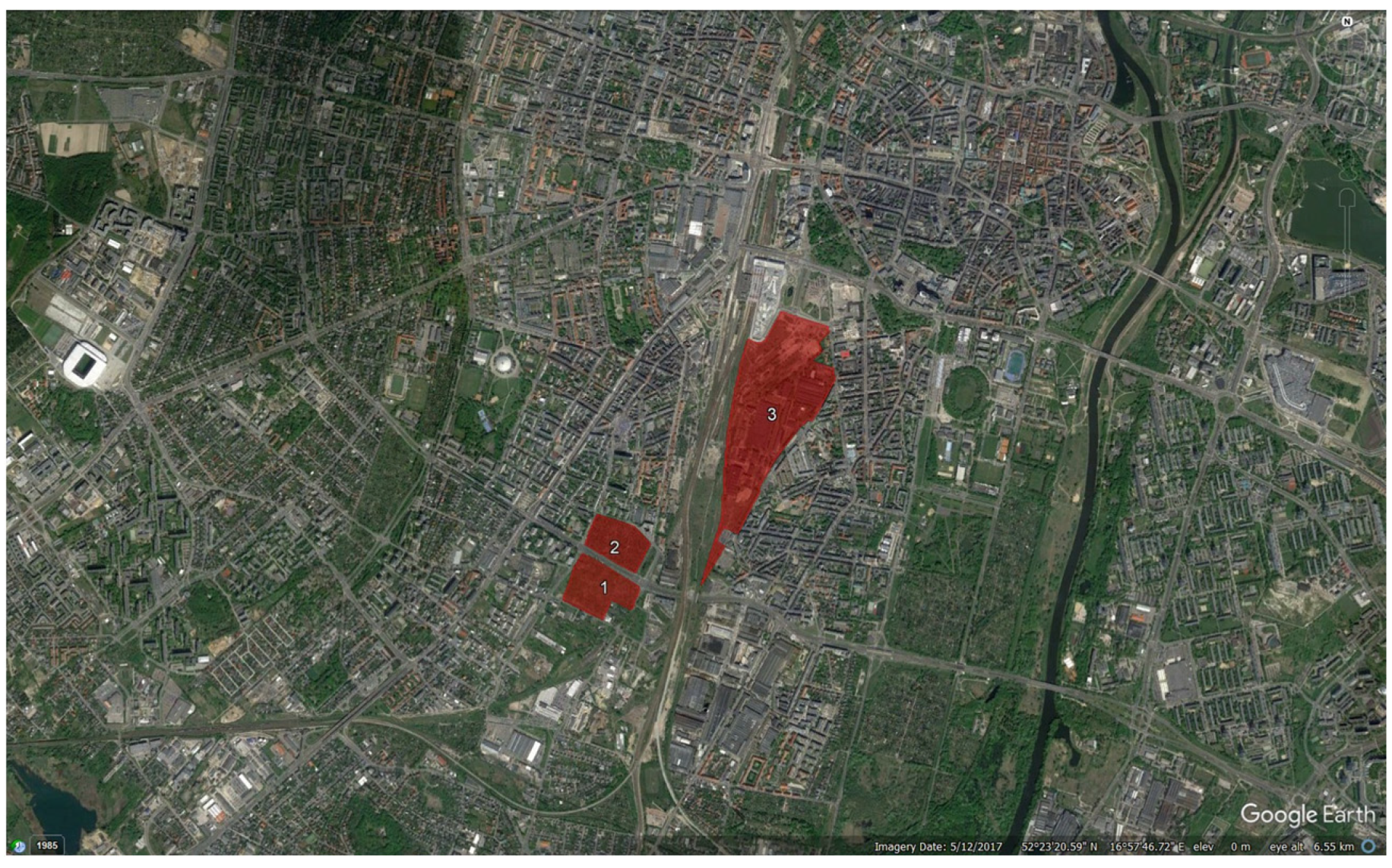
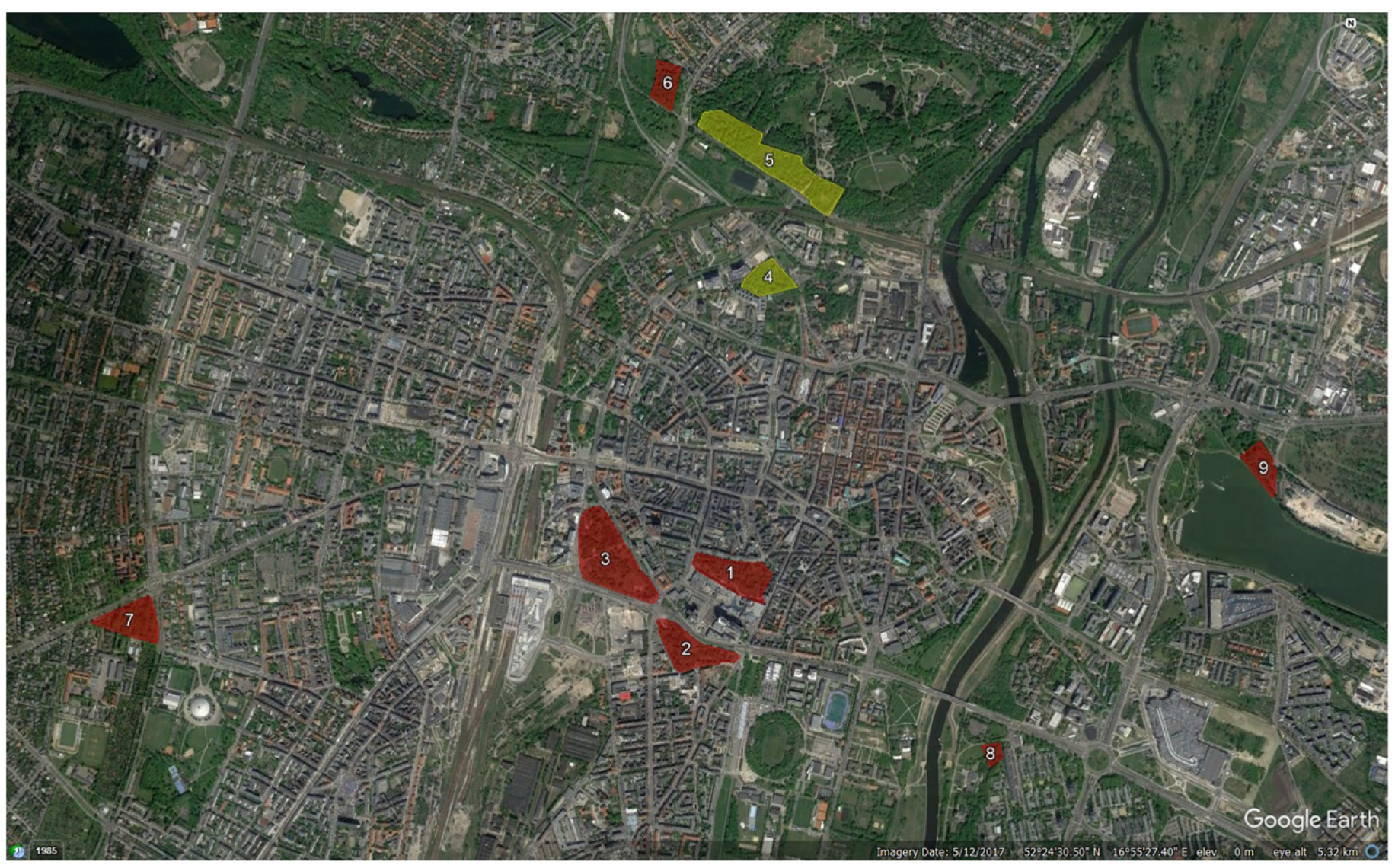
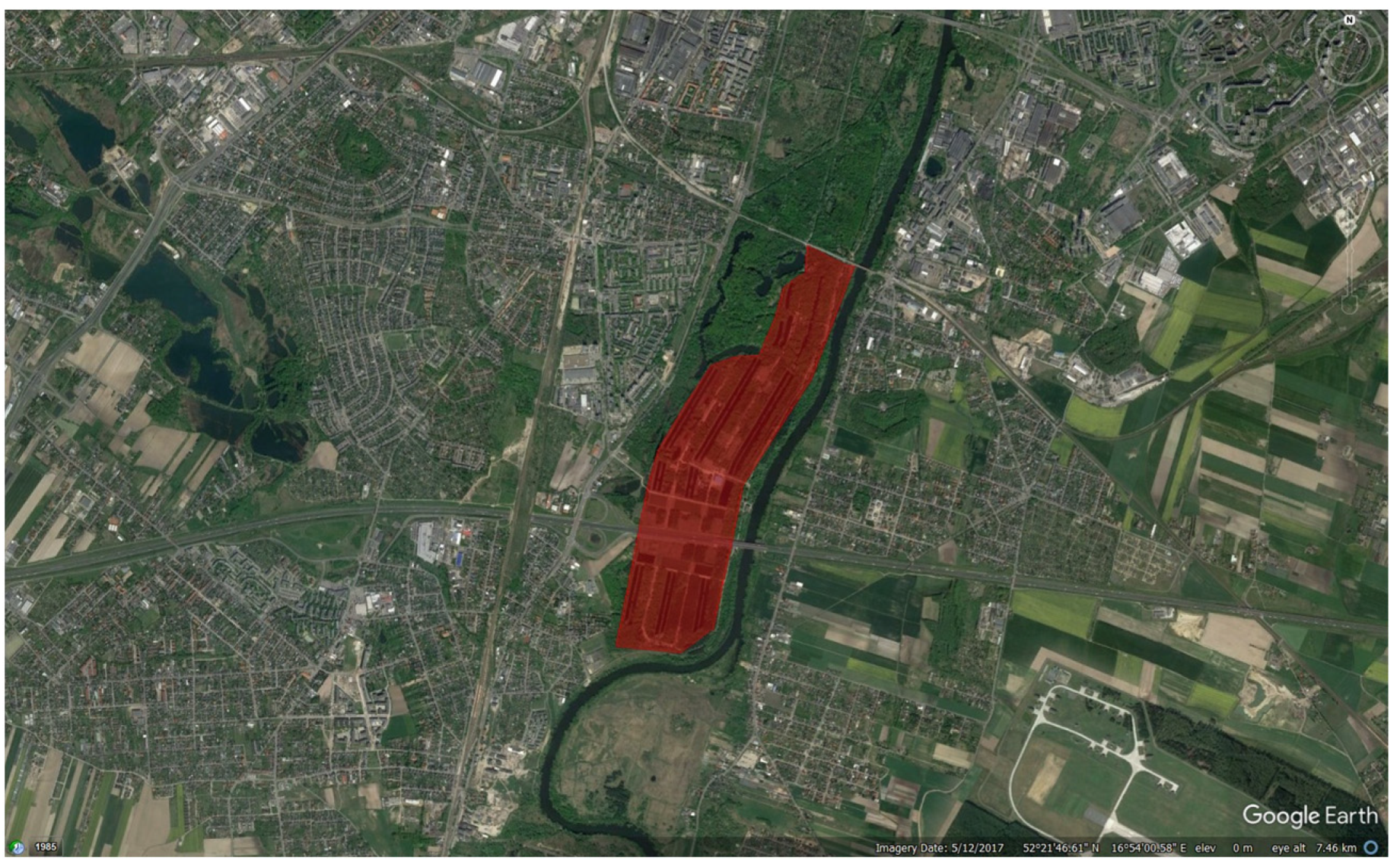
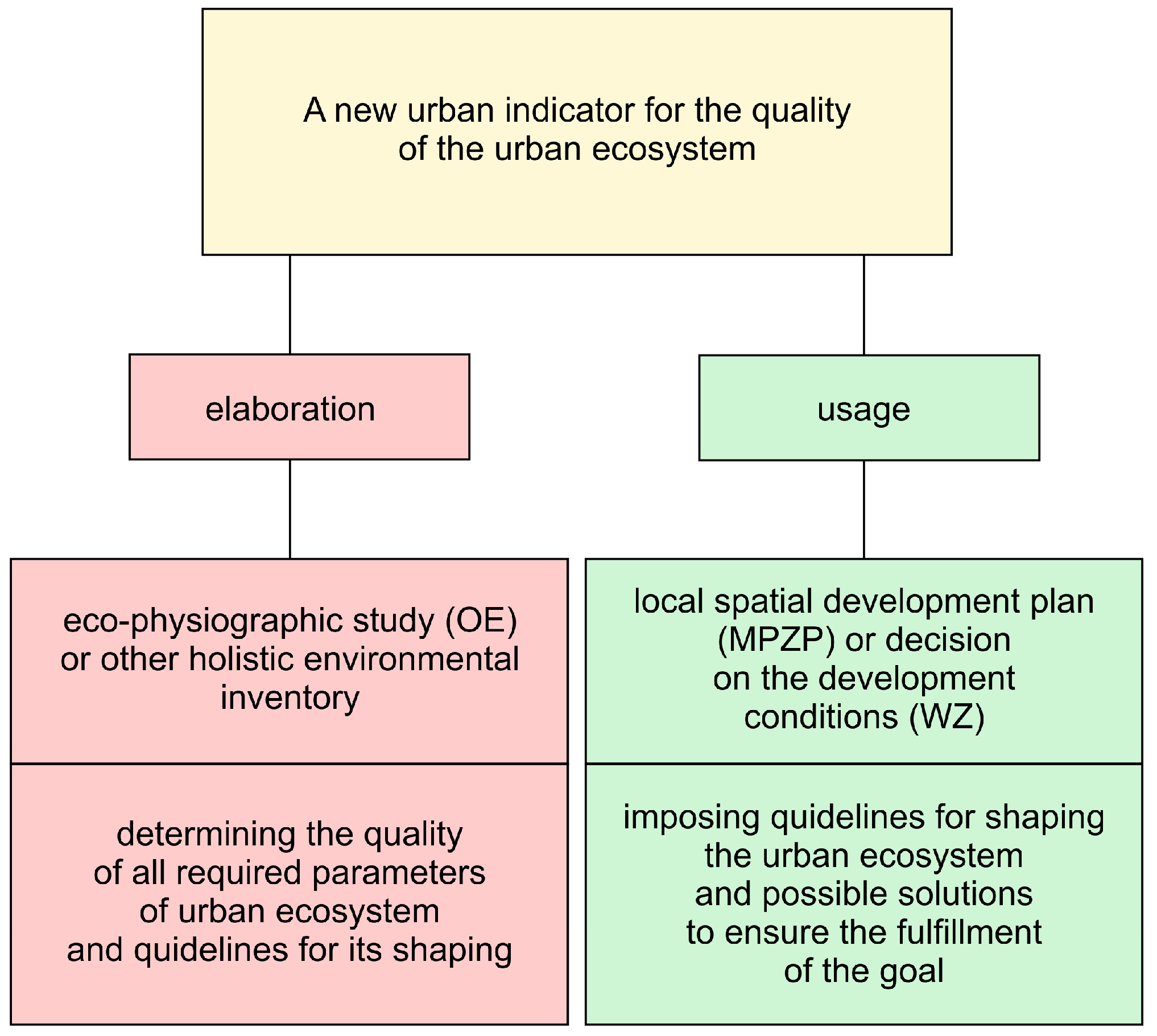
| Feature | Existing Advanced Indexes | |||||
|---|---|---|---|---|---|---|
| EPI | ERI | EQI | UERI | CRI | CDRI | |
| Embedding in one climate | NO | NO | NO | NO | NO | NO |
| Spatial precision scale | country | city district | county | city | city | city |
| Precise data-driven | YES | YES | YES | YES | NO | NO |
| Give spatial and morphological guidelines | NO | NO | NO | NO | NO | NO |
| A methodology based on data embedded in one climate zone | NO | NO | NO | NO | NO | NO |
| Evaluating the role of BGS and its ecosystem services | NO | NO | NO | NO | NO | NO |
| Ability to predict changes | YES | NO | NO | NO | NO | NO |
Disclaimer/Publisher’s Note: The statements, opinions and data contained in all publications are solely those of the individual author(s) and contributor(s) and not of MDPI and/or the editor(s). MDPI and/or the editor(s) disclaim responsibility for any injury to people or property resulting from any ideas, methods, instructions or products referred to in the content. |
© 2023 by the authors. Licensee MDPI, Basel, Switzerland. This article is an open access article distributed under the terms and conditions of the Creative Commons Attribution (CC BY) license (https://creativecommons.org/licenses/by/4.0/).
Share and Cite
Antoszewski, P.; Świerk, D.; Krzyżaniak, M.; Choryński, A. Legal Tools for Blue-Green Infrastructure Planning—Based on the Example of Poznań (Poland). Sustainability 2024, 16, 141. https://doi.org/10.3390/su16010141
Antoszewski P, Świerk D, Krzyżaniak M, Choryński A. Legal Tools for Blue-Green Infrastructure Planning—Based on the Example of Poznań (Poland). Sustainability. 2024; 16(1):141. https://doi.org/10.3390/su16010141
Chicago/Turabian StyleAntoszewski, Patryk, Dariusz Świerk, Michał Krzyżaniak, and Adam Choryński. 2024. "Legal Tools for Blue-Green Infrastructure Planning—Based on the Example of Poznań (Poland)" Sustainability 16, no. 1: 141. https://doi.org/10.3390/su16010141
APA StyleAntoszewski, P., Świerk, D., Krzyżaniak, M., & Choryński, A. (2024). Legal Tools for Blue-Green Infrastructure Planning—Based on the Example of Poznań (Poland). Sustainability, 16(1), 141. https://doi.org/10.3390/su16010141







